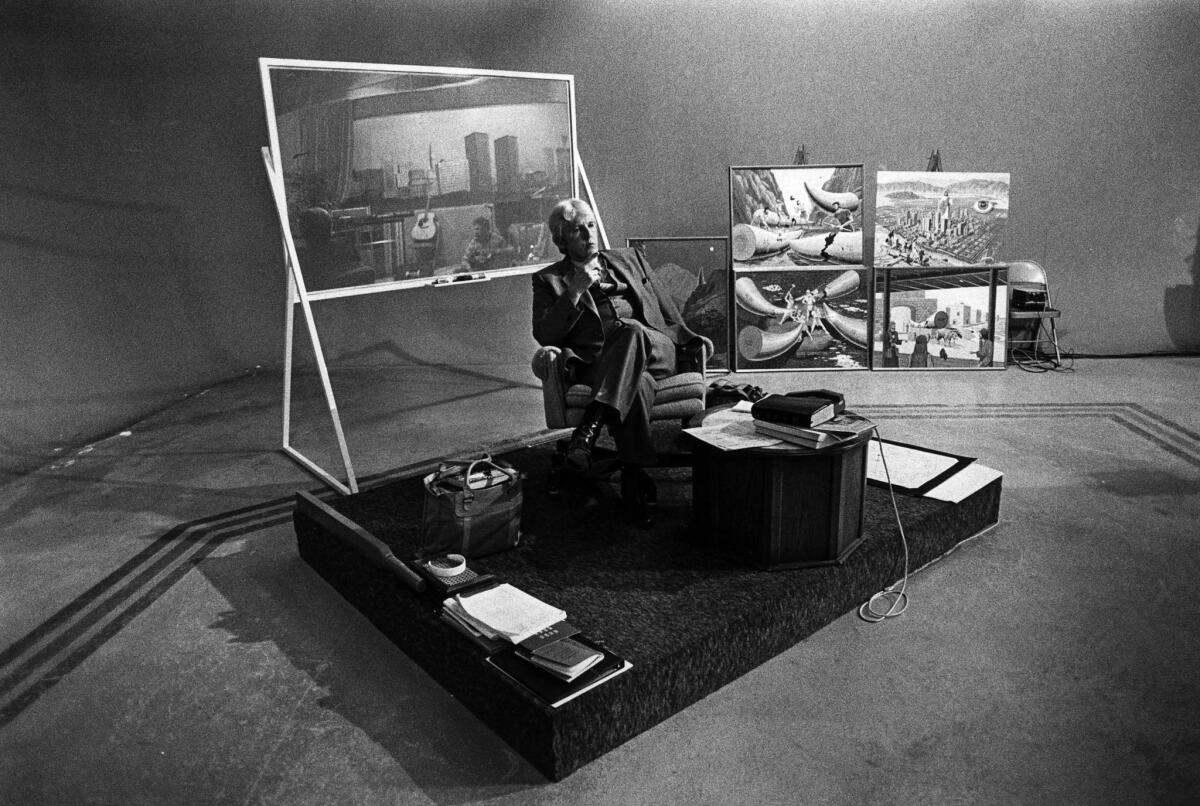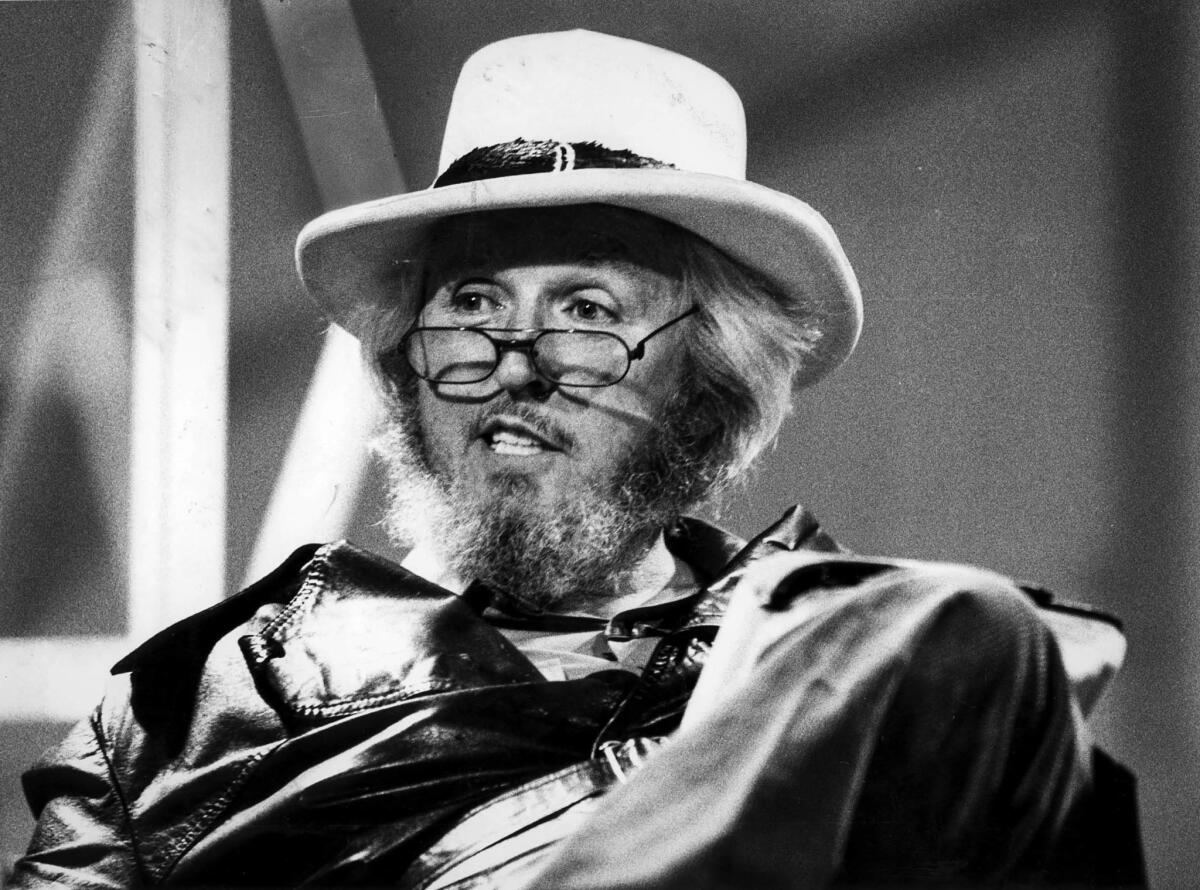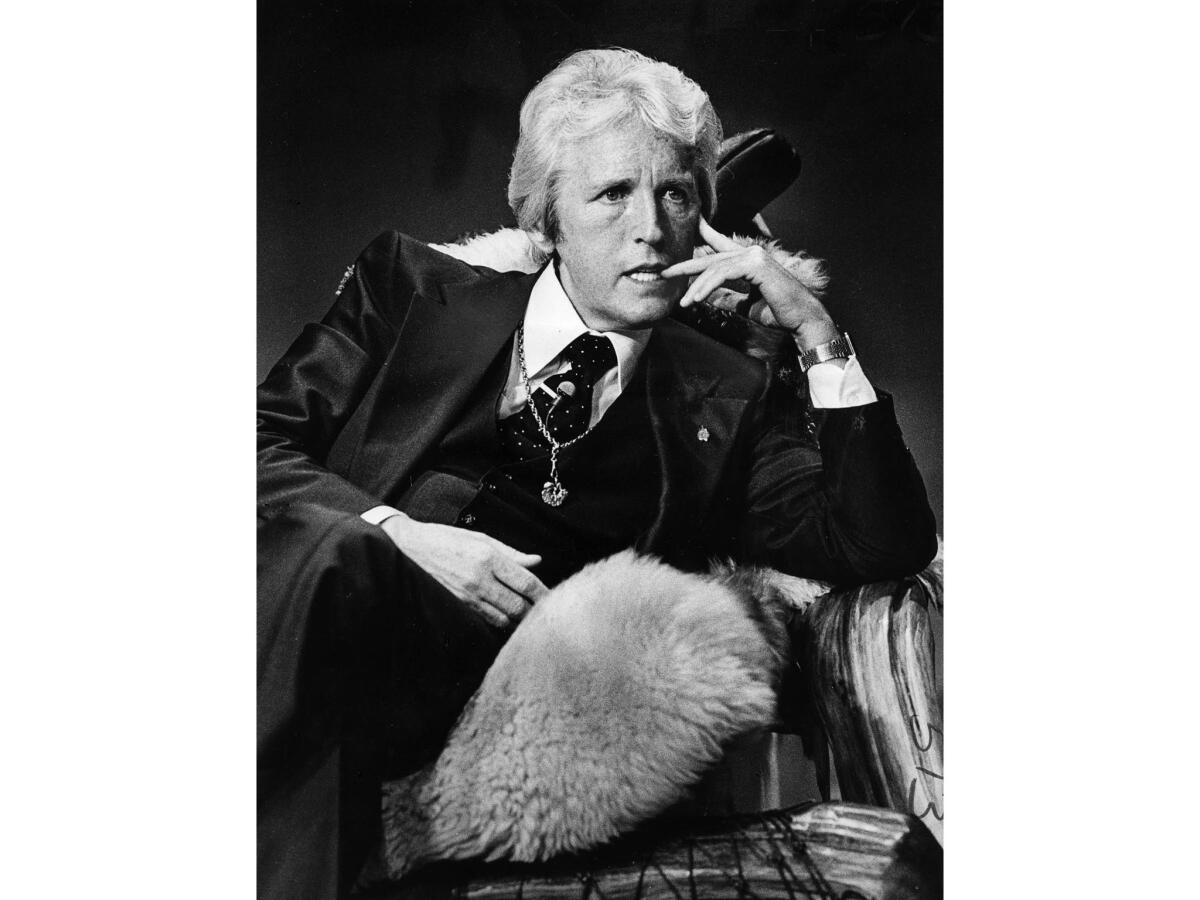From the Archives: When the lights went out on Gene Scott’s network

In the late 1970s, Glendale preacher Gene Scott’s broadcast network ran afoul of the Federal Communications Commission. The FCC began its investigation after accusations of financial mismanagement.
Scott’s refusal to turn over financial records led to the FCC shutting down his network, starting with KHOF-TV Channel 30.
The dispute involved the licenses of KHOF-TV, a San Bernardino FM radio station, and TV stations in San Francisco and Hartford, Conn.
Allan Parachini reported on the shutdown in the May 25, 1983, Los Angeles Times:
A few seconds after 12 a.m. Tuesday, sitting alone in a small cubicle on a ridge in the San Gabriel Mountains, 5 1/2 miles north of Claremont, a man named Stan Lehman reached up, pushed a small green button and, with no audience to watch him, accomplished two things no one else has achieved in the United States in eight years.
Lehman is a transmitter engineer for KHOF-TV Channel 30, the flagship station of the Faith Broadcasting Network, the television ministry of eccentric Glendale preacher Gene Scott. With the flick of the switch, Lehman turned off the transmitter, allowing KHOF-TV to become the first American television outlet to go dark since 1975.
Lehman also became the only person ever to successfully interrupt Scott’s often seemingly endless diatribe against the federal and state governments in general and the Federal Communications Commission in particular. Faced with an FCC order to shut down his Channel 30 flagship station, Scott elected to silence its signal 60 seconds before the FCC deadline.
But the shutdown came only after the preacher, angry and defiant as ever, had ceremoniously beaten the heads of dozens of toy monkeys that served as his sort of voodoo dolls for bureaucrats and proclaimed that what almost anyone else might see as a major defeat was really a significant victory. …
This whole episode was just a blip in Scott’s ministry. Only KHOF-TV was shut down. Scott continued broadcasting on his other radio and TV stations. As part of the shutdown, Scott “exhorted his faithful to start calling him on the telephone… and pledge money for the ministry…”
“Twelve seconds later (after the shutdown), every one of the 46 telephone operators…was occupied with a call.”
“Ten minutes later, he counted the pledges. The total was $1 million.”
Two years later, a July 21, 1985, Los Angeles Times story reported that Scott had “put together a new network by buying time on some stations – usually in the middle of the night – selling satellite receiver dishes to his followers and persuading cable companies to run his programming 24 hours a day on closed circuit. The network now includes 18 over-the-air stations and cable outlets in 15 markets.”
And The Times reported Scott’s broadcast brought strong ratings. In Reno, “Scott’s late-night share has been as high as 39%.”
Below are several additional images of Gene Scott from the Los Angeles Times archives.






Sign up for The Wild
We’ll help you find the best places to hike, bike and run, as well as the perfect silent spots for meditation and yoga.
You may occasionally receive promotional content from the Los Angeles Times.



